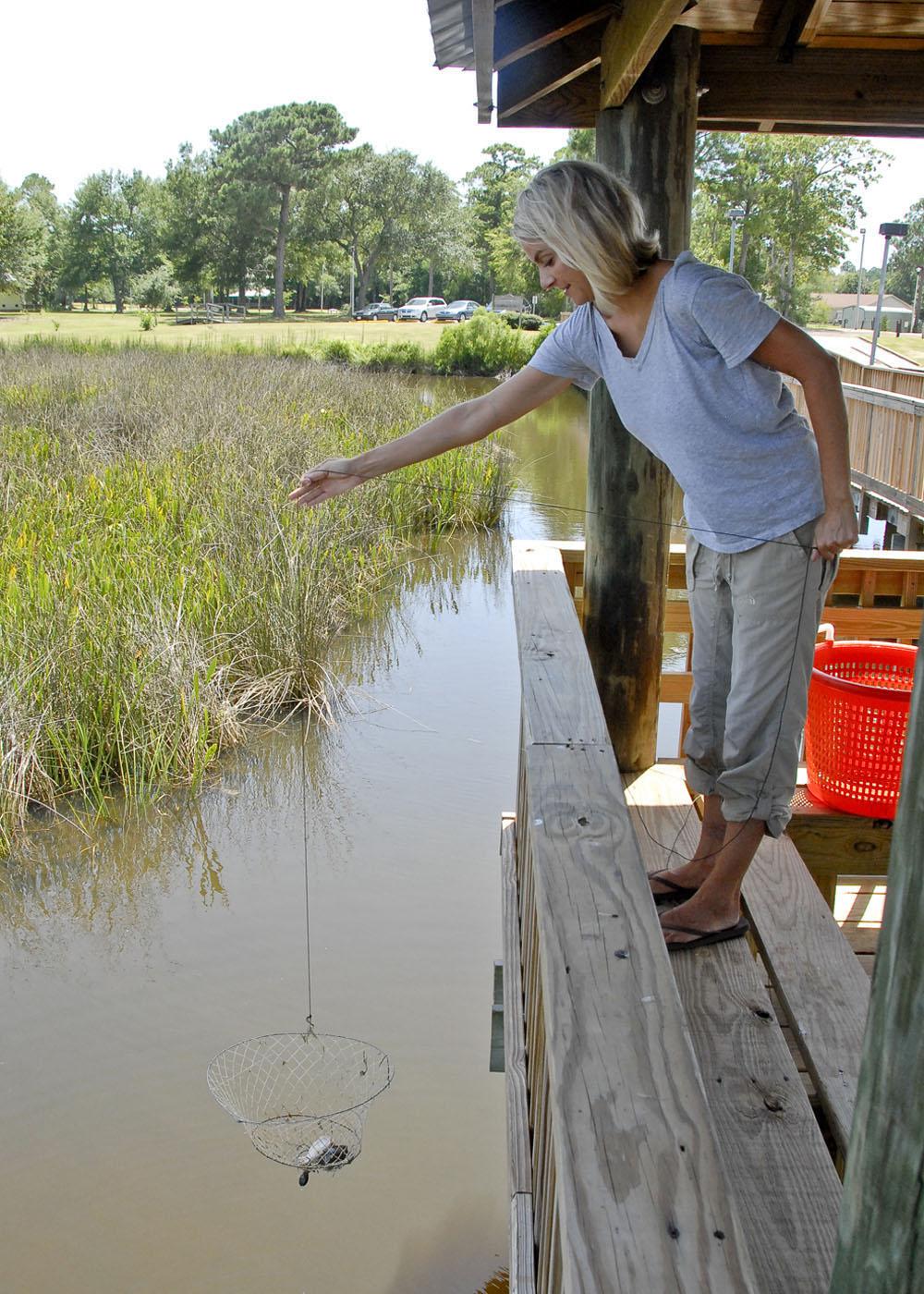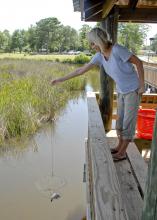Information Possibly Outdated
The information presented on this page was originally released on August 12, 2010. It may not be outdated, but please search our site for more current information. If you plan to quote or reference this information in a publication, please check with the Extension specialist or author before proceeding.
Coast fishing, crabbing often more than recreation
MISSISSIPPI STATE -- Chicken and nets may not seem high tech, but a Mississippi State University student finds them necessary tools for researching an important Gulf Coast resource.
MSU College of Forest Resources’ doctoral student Sarah Harrison is collecting data on the blue crab populations in the Pascagoula Estuary. She uses crab nets baited with raw chicken legs to pull the crustaceans from the shallow waters of the estuary. Avoiding their snapping claws, she weighs and measures the crabs before returning them to the water.
The data Harrison is collecting on catch rates, weight and size will help reveal how well the crab population in the Pascagoula Estuary has recovered from the impact of Hurricane Katrina. It will also influence management decisions.
“Fishing is an important part of the economic and cultural lives of many people on the Gulf Coast,” Harrison said. “Hurricane Katrina had a devastating effect on both river and estuarine fisheries along the Coast, and many people are just now starting to regain their connections with fishing, including crabbing.”
This is the first year of the two-year project, which could become even more important if oil from the spill in the Gulf reaches the blue crab habitat.
“If oil reaches the estuary, we will see how catch rates are affected because I have pre-oil data,” Harrison said. “Catch rates were increasing in July because commercial crabbing was closed due to the oil spill.”
Although commercial-scale crabbing is important to the Gulf Coast economy, crabbing by individuals and families is often more than just a recreational activity.
“In hard times, such as in the aftermath of Katrina and, more recently, the oil spill, many Coast residents use fishing and crabbing as a way to supplement their incomes or as a way to reduce grocery bills,” said Don Jackson, fisheries biologist and professor in MSU's Department of Wildlife, Fisheries and Aquaculture. “The data being collected helps us understand the biology of the blue crab, but we are looking at how people on the Coast use marine resources, and the study will include interviews with Coast residents who crab and fish.”
Jackson is the principal investigator for the study at the Pascagoula Estuary, which also collects data on catfish populations in the coastal areas of the Pascagoula and Pearl Rivers. Assistant professor of aquatic sciences Robert Kroger and undergraduate assistant Aaron Diaz are also working on the project. Both Jackson and Kroger have joint appointments with the MSU Forest and Wildlife Research Center and the Mississippi Agricultural and Forestry Experiment Station.
Funding and other support for the project is being provided by the Mississippi Department of Wildlife, Fisheries and Parks.
“The goal of the project is to provide the Mississippi Department of Wildlife, Fisheries and Parks and the Mississippi Department of Marine Resources with information that can be used to revitalize the socially and economically important fisheries in the coastal areas of the Pearl and Pascagoula Rivers and the Pascagoula Estuary,” Jackson said.
Contact: Dr. Don Jackson, (662) 325-7493







